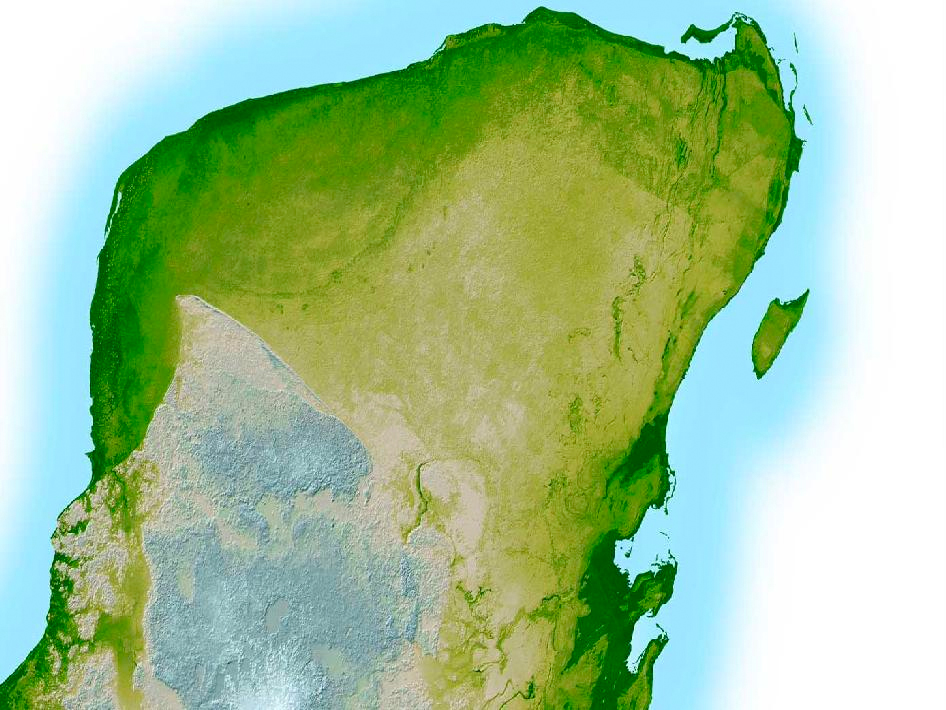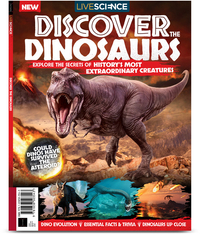Dinosaur-killing space rock may have originated at the edge of the solar system
Jupiter kicked it toward Earth.

The chunk of space rock that killed the nonavian dinosaurs may have been a piece of a comet that Jupiter's gravity kicked onto a collision course with Earth.
A new study suggests that the dinosaur-killing object was not an asteroid from between Jupiter and Mars, as is often hypothesized. Instead, the study authors argue, the impactor was a piece of a comet from the Oort cloud, a mass of icy bodies that surrounds the outer edges of the solar system.
So-called long-period comets from the Oort cloud take hundreds of years to take a lap around the sun, and previous studies had suggested that their chances of crossing the path of a planet are too low to make them a likely culprit for the extinction of the nonavian dinosaurs (and 75% of all other life on Earth roughly 66 million years ago). But the new research, published Feb. 15 in the journal Scientific Reports, finds that Jupiter's gravity pushes about 20% of these long-period comets close to the sun, where they break apart. The resulting fragments are 10 times more likely than other Oort cloud comets to hit Earth.
Related: The 7 most mysterious mass extinctions
Discover the Dinosaurs: $22.99 at Magazines Direct
Journey back to the age of dinosaurs with Live Science and uncover the secrets of some of the prehistoric world’s most remarkable beasts. From the Tyrannosaurus rex and Diplodocus to the Triceratops and Coelophysis, get up close and discover how these fascinating creatures lived, hunted, evolved and ultimately died out. Why did Stegosaurus travel in herds? Is it possible to clone a dinosaur? Find the answers to these questions and many more.
A disastrous impact

The impact at the end of the Cretaceous period left a crater about 93 miles (150 kilometers) in diameter near the present-day town of Chicxulub, Mexico, lending the guilty space rock its name, the Chicxulub impactor. The rock was at least 6 miles (9.6 km) wide and hit the planet at about 44,640 mph (71,840 km/h), according to researchers at the University of Texas at Austin. It triggered a mile-high tsunami and melted the crust at the point of impact.
Where the Chicxulub impactor came from is a matter of debate. Geological analysis of the crater suggests that it was a carbonaceous chondrite, a type of meteor that makes up only about 10% of those found within the main asteroid belt in the solar system. It's possible that more of the objects in the Oort cloud have this composition, according to study authors Avi Loeb, an astronomer at Harvard University, and Amir Siraj, an undergraduate astronomy student at Havard.
The researchers simulated the paths of long-period comets from the Oort cloud past Jupiter and found that the gravitational field of the solar system's largest planet turns about one-fifth of long-period comets into "sun-grazers," which are comets that pass very close to the sun. At close range, the sun's gravity pulls harder on the close side than on the far side of this type of comet, creating tidal forces that can break the comet apart.
Sign up for the Live Science daily newsletter now
Get the world’s most fascinating discoveries delivered straight to your inbox.
A chance of collision
The fragments from these celestial breakups are more likely than an intact comet to intersect with Earth on their return journey toward the Oort cloud; such events are capable of producing a Chicxulub-size impact every 250 million to 730 million years, the researchers said.
"Our paper provides a basis for explaining the occurrence of this event," Loeb said in a statement. "We are suggesting that, in fact, if you break up an object as it comes close to the sun, it could give rise to the appropriate event rate and also the kind of impact that killed the dinosaurs."
The Zhamanshin crater in Kazakhstan, which is the largest impact crater made in the past million years, may also have been created by a carbonaceous chondrite, Loeb and Sajir wrote in the new paper, supporting the theory that these types of large fragments are relatively likely to hit Earth. More research on Earth's impact craters and comet composition could help bolster the evidence for the hypothesis.
"We should see smaller fragments coming to Earth more frequently from the Oort cloud," Loeb said. "I hope that we can test the theory by having more data on long-period comets, get better statistics and perhaps see evidence for some fragments."
Originally published on Live Science

Stephanie Pappas is a contributing writer for Live Science, covering topics ranging from geoscience to archaeology to the human brain and behavior. She was previously a senior writer for Live Science but is now a freelancer based in Denver, Colorado, and regularly contributes to Scientific American and The Monitor, the monthly magazine of the American Psychological Association. Stephanie received a bachelor's degree in psychology from the University of South Carolina and a graduate certificate in science communication from the University of California, Santa Cruz.










